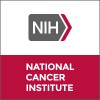
Combination Chemotherapy Followed by Donor Stem Cell Transplant in Treating Patients With Relapsed...
LymphomaRATIONALE: Giving chemotherapy before a donor stem cell transplant helps stop the growth of cancer cells. It also helps stop the patient's immune system from rejecting the donor's stem cells. When the healthy stem cells from a donor are infused into the patient they may help the patient's bone marrow make stem cells, red blood cells, white blood cells, and platelets. Sometimes the transplanted cells from a donor can make an immune response against the body's normal cells. Giving cyclosporine, mycophenolate mofetil, and methotrexate before and after transplant may stop this from happening. PURPOSE: This phase II trial is studying how well combination chemotherapy followed by donor stem cell transplant works in treating patients with relapsed or high-risk primary refractory Hodgkin lymphoma.

Oxaliplatin and Prednisolone (Ox-P) for Patients With Relapsed or Refractory Marginal Zone B-cell...
B-cell LymphomasThe investigators are willing to investigate the efficacy and safety of oxaliplatin and prednisolone (Ox-P) combination in patients with previously treated MZL who have a few clinical trial data.

Therapy for Patients With Untreated Age-Adjusted International Prognostic Index Low-Intermediate...
Non-Hodgkin's LymphomaAbout 60% of patients with DLBCL can be cured with a chemotherapy program. It is called RCHOP-21 (Rituximab, Cyclophosphamide, Doxorubicin, Vincristine, and Prednisone). It is given once every 3 weeks, for 18 weeks. Each three weeks is a cycle. Some factors predict that you may not be cured with R-CHOP-21. The most common ones are: Stage - how much DLBCL, PMBL, or FL3B you have LDH - a blood chemistry marker; and Whether you can do your normal daily activities. (performance status) We think that the best way to cure more patients with poor risk factors is to add new treatment to R-CHOP. You will get different chemotherapy after 4 cycles. This type of treatment is called risk-adapted therapy.

SNX-5422 to Treat Solid Tumor Cancers and Lymphomas
LymphomaNeoplasmsBackground: SNX-5422 is an experimental drug that inhibits a protein called Hsp90, which is important for the growth of tumor cells. SNX-5422 has shown some activity against tumors in the laboratory and animal studies. Objectives: To determine the highest safe dose, or maximum tolerated dose (MTD), of SNX-5422 that can safely be given to patients with solid tumor cancers and lymphomas when taken twice a week. To learn how the body's blood and tissue cells react to SNX-5422. To examine the effects of SNX-5422 on tumors and lymphomas. Eligibility: Patients 18 years of age or older who have solid tumor cancers or lymphomas that do not respond to standard therapy or for whom no acceptable standard treatment is available. Design: SNX-5422 is taken by mouth twice a week in 28-day cycles. Treatment may continue as long as the cancer does not worsen and side effects are acceptable. Three to six patients are enrolled in the study at a time. Each group is given a higher dose of SNX-5422 than the previous, as long as the preceding dose was tolerated and until the MTD is determined. When the MTD is found, six more patients are enrolled at that dose level. During the treatment period, patients undergo the following tests and procedures: Clinic visits for a physical examination each treatment cycle to check on health status. Blood tests for routine laboratory values, to determine how the body handles SNX-5422, and to examine the effects of SNX-5422 on blood cells and other targets. Urine tests as needed, depending on the results of blood tests. CT scans, or other imaging tests every 8 weeks to evaluate the tumor response to treatment. Tumor biopsy (surgical removal of a tissue sample for examination under a microscope) before the first dose of SNX-5422 and again 24 hours after the first dose to see how the drug affects the tumor. This test is optional.

Aflibercept and Standard Chemotherapy (R-CHOP) in First Line of Non Hodgkin B-cell Lymphoma
LymphomaNon-HodgkinThe purpose of this study is to determine the selected dose of aflibercept when it is combined with R-CHOP treatment (Rituximab/Cyclophosphamide/Doxorubicin/Vincristine/Prednisone +/- intrathecal Methotrexate) administered every 2 weeks or every 3 weeks, in non Hodgkin B-cell lymphoma, and to determine how the body handles aflibercept when it is administered with R-CHOP.

Oral Clofarabine for Relapsed/Refractory Non-Hodgkin Lymphoma
Follicular LymphomaMarginal Zone Lymphoma9 moreOral clofarabine is related to two intravenous chemotherapy drugs used for this disease and works in two different ways. It affects the development of new cancer cells by blocking two enzymes that cancer cells need to reproduce. When these enzymes are blocked, the cancer call can no longer prepare the DNA needed to make new cells. Clofarabine also encourages existing cancer cells to die by disturbing components within the cancer cell. This causes the release of a substance that is fatal to the cell. This trial studies the efficacy of oral clofarabine in the treatment of relapsed non-Hodgkin lymphomas.

Rituximab and Hyper-CVAD (Cyclophosphamide, Vincristine, Adriamycin, and Dexamethasone) for Burkitt's...
Burkitt's LymphomaBurkitt'S-like LymphomaThe goal of this clinical research study is to learn if intensive chemotherapy given over 6 months can help to control or cure Burkitt's leukemia, Burkitt's lymphoma, or small non-cleaved cell B-cell leukemia or lymphoma. Another goal is to see how well this treatment works when given with Rituximab. The safety of the combined treatment will also be studied.

Study Evaluating The Safety And Tolerability Of Combination Therapy Inotuzumab Ozogamicin (CMC-544)...
LymphomaB-CellTo assess the tolerability and the initial safety profile of Inotuzumab Ozogamicin (CMC-544) in combination with Rituximab in patients with B-Cell Non-Hodgkin's lymphoma (NHL).

Vorinostat and Rituximab in Treating Patients With Indolent Non-Hodgkin Lymphoma
LymphomaRATIONALE: Vorinostat may stop the growth of cancer cells by blocking some of the enzymes needed for cell growth. Monoclonal antibodies, such as rituximab, can block cancer growth in different ways. Some block the ability of cancer cells to grow and spread. Others find cancer cells and help kill them or carry cancer-killing substances to them. Giving vorinostat together with rituximab may kill more cancer cells. PURPOSE: This phase II trial is studying the side effects of giving vorinostat together with rituximab and to see how well it works in treating patients with indolent non-Hodgkin lymphoma.

T-Cell Depleted Allogeneic Stem Cell Transplantation for Patients With Hematologic Malignancies...
Acute Myelogenous LeukemiaLymphoid Leukemia8 moreObjectives: To evaluate disease free survival after Campath 1H-based in vivo T-cell depletion and non-myelo-ablative ablative stem cell transplantation in patients with hematologic malignancies. To evaluate the incidence and severity of acute and chronic GVHD after Campath 1H-based in vivo T-cell depletion, in patients with hematologic malignancies undergoing non-myelo-ablative stem cell transplantation. To evaluate engraftment and chimerism after Campath 1H-based in vivo T-cell depletion and non-myelo-ablative ablative stem cell transplantation in patients with hematologic malignancies.
